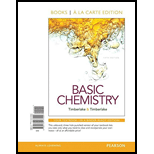
Concept explainers
(a)
Interpretation:
Interpret number of valence electron, bond pair and lone pair in the given Lewis structure.
Concept Introduction:
Valence electrons are the electrons present in the outermost orbital or shell of an atom which participates in the formation of bond with another atom.
The bond formed between two atoms by sharing of electrons is known as covalent bond. A single
Total number of valence electron can be determined by adding all the electrons present in the outermost shell of each atom present in a molecule.
For example, in HxOy
Total number of valence electron = number of H (valence electron of H) + number of O (valence electron of O)
(b)
Interpretation:
Interpret number of valence electron, bond pair and lone pair in given Lewis structure.
Concept Introduction:
Valence electrons are the electrons present in the outermost orbital or shell of an atom which participates in the formation of bond with another atom.
The bond formed between two atoms by sharing of electrons is known as covalent bond. A single chemical bond is formed by sharing of 2 electrons while double bond is formed by sharing of 4 and triple bond is formed by sharing of 6 electrons.
Total number of valence electron can be determined by adding all the electrons present in the outermost shell of each atom present in a molecule.
For example, in HxOy
Total number of valence electron = number of H (valence electron of H) + number of O (valence electron of O)
(c)
Interpretation:
Interpret number of valence electron, bond pair and lone pair in Br-Br
Concept Introduction:
Valence electrons are the electrons present in the outermost orbital or shell of an atom which participates in the formation of bond with another atom.
The bond formed between two atoms by sharing of electrons is known as covalent bond. A single chemical bond is formed by sharing of 2 electrons while double bond is formed by sharing of 4 and triple bond is formed by sharing of 6 electrons.
Total number of valence electron can be determined by adding all the electrons present in the outermost shell of each atom present in a molecule.
For example, in HxOy
Total number of valence electron = number of H (valence electron of H) + number of O (valence electron of O)
Want to see the full answer?
Check out a sample textbook solution
Chapter 10 Solutions
Basic Chemistry, Books a la Carte Edition (5th Edition)
 ChemistryChemistryISBN:9781305957404Author:Steven S. Zumdahl, Susan A. Zumdahl, Donald J. DeCostePublisher:Cengage Learning
ChemistryChemistryISBN:9781305957404Author:Steven S. Zumdahl, Susan A. Zumdahl, Donald J. DeCostePublisher:Cengage Learning ChemistryChemistryISBN:9781259911156Author:Raymond Chang Dr., Jason Overby ProfessorPublisher:McGraw-Hill Education
ChemistryChemistryISBN:9781259911156Author:Raymond Chang Dr., Jason Overby ProfessorPublisher:McGraw-Hill Education Principles of Instrumental AnalysisChemistryISBN:9781305577213Author:Douglas A. Skoog, F. James Holler, Stanley R. CrouchPublisher:Cengage Learning
Principles of Instrumental AnalysisChemistryISBN:9781305577213Author:Douglas A. Skoog, F. James Holler, Stanley R. CrouchPublisher:Cengage Learning Organic ChemistryChemistryISBN:9780078021558Author:Janice Gorzynski Smith Dr.Publisher:McGraw-Hill Education
Organic ChemistryChemistryISBN:9780078021558Author:Janice Gorzynski Smith Dr.Publisher:McGraw-Hill Education Chemistry: Principles and ReactionsChemistryISBN:9781305079373Author:William L. Masterton, Cecile N. HurleyPublisher:Cengage Learning
Chemistry: Principles and ReactionsChemistryISBN:9781305079373Author:William L. Masterton, Cecile N. HurleyPublisher:Cengage Learning Elementary Principles of Chemical Processes, Bind...ChemistryISBN:9781118431221Author:Richard M. Felder, Ronald W. Rousseau, Lisa G. BullardPublisher:WILEY
Elementary Principles of Chemical Processes, Bind...ChemistryISBN:9781118431221Author:Richard M. Felder, Ronald W. Rousseau, Lisa G. BullardPublisher:WILEY





